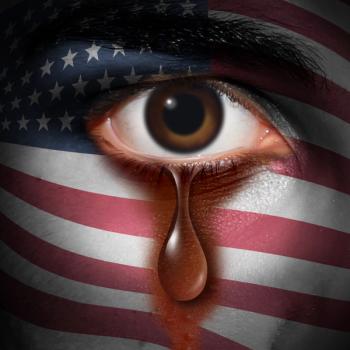
Preparing for the Mental Health Repercussions of the COVID-19 Pandemic
The COVID-19 pandemic reveals existing weaknesses in the mental health system, but also presents opportunities for reform.
Our mental health system is facing something of a perfect storm. The stress of the
The simultaneous increased demand and decrease in available services could generate a second phase of the
This country has been struggling with mental health care problems even before COVID-19. Deaths from suicide, drug overdose, and alcohol-related liver disease,
We were caught unawares by the COVID-19 pandemic, and we are suffering the consequences. We cannot afford a repeat failure.
The good news is that there are evidence based, cost-effective interventions to address public mental health needs.9,10 But let us start with what we should not do. We should not—as we repeatedly do out of habit—continue talking about our “mental health system.” The truth is that we do not have a system but rather a patchwork or mosaic that is far from comprehensive and not close to being adequate. The same is true for all of health care; there are many systems, organizations, clinics, and practices delivering mental health services under many auspices (from governments to nonprofits to for profit investor-owned). However, these neither meet all health care needs nor provide the requisite evidence-based services or ensure uniform quality of care. Given the wide range of stakeholders and the lack of leadership and political will, it is doubtful we will see one system emerge from the COVID-19 crisis. Yet, we can use this opportunity to accelerate the coordination of services for communities, including adequate mental health services that will provide a template for post-COVID care.
Accountable care organizations, medical homes, and Medicaid waivers have all inched coordinated care forward. We have also seen expanded use of telehealth due to the elimination of regulatory and reimbursement barriers. Virtually overnight, this resulted in unfettered adoption of online mental health treatment. We can do the same for coordinated care by removing regulatory barriers and offering payments that incentivize hospitals and their services, community-based organizations, and local primary care providers to create a no-wrong door, seamless continuum of mental health and substance abuse services.
This is our vision for the Northern Manhattan Mental Health Initiative, targeting one of the most severely affected areas by the COVID-19 virus. It gives health care providers and communities the opportunity to strengthen existing relationships, build new partnerships, and create a safety net for patients.
Other systemic problems can be addressed to meet the increasing demand for mental health care. For example, there are
In the midst of this pandemic, many inpatient beds, including those in our institution, have been converted to medical units to meet the deluge of patients with COVID-19, and it is unclear when or how they will return.
While such developments are regrettable, they are incentivized by the health care financing system that provides far higher reimbursements for procedural interventions than for preventative health measures like mental health. For example, according to the Centers for Medicare & Medicaid Services Physician Fee Schedule, payment for an emergency hour-long session by a psychiatrist with a patient who is acutely suicidal, homicidal, or floridly psychotic is only $147, while a 10 minute skin biopsy and 20 minute cataract surgery are reimbursed at rates of $150 and $765, respectively.14 These disparities are 1 reason there are so many surgery centers with an average profit of $2 million profit per year are popping up, while nearly half of patients with mental health disorders go without treatment.15,16 Leveling the playing field with reimbursement will incentivize health systems to emphasize mental health treatment.
Of course, mental health, like physical health, does not exist in a vacuum. When people’s basic needs are met, they are healthier in mind and body. The previously noted interventions will be most effective if we do all we can to address social determinants of health, including nutrition, housing, education, community safety, and employment. Being poor is bad for your health. This certainly holds true in New York City, where black and Latinx people are disproportionately vulnerable to the coronavirus.
Given our awareness of the looming mental health repercussions of the COVID-19 pandemic, we cannot remain idle in the anticipation of 75,000 excess deaths from the complications of mental disorders. It is morally wrong to condemn those who have the least to suffer the most, and it is irresponsible for us not to plan for a public mental health initiative to stem this imminent crisis.
Dr Magoon is a resident in psychiatry at the New York Presbyterian Hospital, Columbia University Irving Medical Center. Ms Rosenberg is assistant professor of medical sociology at Columbia University Vagelos College of Physicians and Surgeons and past president of the National Council for Behavioral Health. Dr Lieberman is chairman of psychiatry at Columbia University Vagelos College of Physicians and Surgeons, past president of the American Psychiatric Association, and the author of Shrinks: The Untold Story of Psychiatry.
References
1. Wan W.
2. Dembosky A.
3.
4. Ress D.
5. Kivimäki M, Batty GD, Pentti J, et al.
6. Karma R.
7. Kunzmann K.
8. Well Being Trust.
9. WHO.
10. Arango C, Díaz-Caneja CM, McGorry PD, et al.
11. Raphelson S.
November 30, 2017. Accessed August 25, 2020.
12. National Council for Behavioral Health.
13. Hlavinka E.
14. CMS.
15.
16. Christidis P, Lin L, Stamm K.
Newsletter
Receive trusted psychiatric news, expert analysis, and clinical insights — subscribe today to support your practice and your patients.














